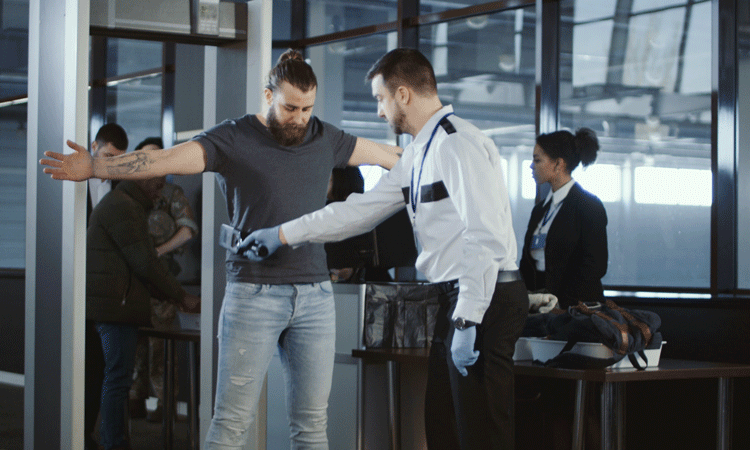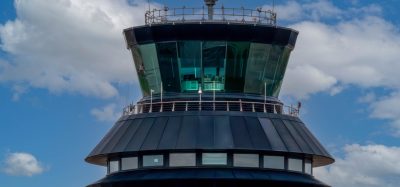Airport security and brand image: Eight measures for a ground-up approach to prevent bad press
Posted: 25 May 2022 | Colonel Amit Dabas | No comments yet
Amit Dabas, Chief Security Officer and Head, Loss Prevention at Adani Airports, delves into the topic of airport security and explains the wider, though no less important, role this department plays in airport brand image and achieving a positive passenger experience.


A simplistic thought could situate an airport as a monopoly. After all, there is usually that one airport in a town or small city and passengers must necessarily travel through. Yet, we find airports stress more and more on that elusive ‘wow factor’, and increasingly place the customer at the centre of their thought process. The talk in the boardroom revolves around painless passenger touch points, seamless customer journey, digitisation of processes, meaningful dwell time in retail spaces, etc. In short, the central piece is about passenger facilitation – enabling travellers to move from the city, through the terminal building and onwards to the boarding gates not only in a hassle-free manner – but with an experience that makes it all worthwhile. The airport business model has moved on from celebrating globalisation to promoting brand image and reaping the incidental benefits that come with a wider acceptance of a brand and a loyal customer base.
The experience with landside arrangements and security processes within the terminal determines the mental state of a customer in the retail space. This mental state is his feel and consequent judgement of the airport brand. This is true of both arrival and departure terminals. An anxiety-free, satisfied customer tends to spend more. Dwell time is one aspect and meaningful dwell time that makes cash registers ring is quite another.
The role of airport security
At airports where security and landside operations are clubbed under the same vertical, the role of the security department in preserving and promoting brand image becomes even more important owing the omnipresent nature of security manpower, processes, and technology. Departing passengers usually associate the experience at an airport with two major factors – the standard of the retail stores (read glitz, allure, and availability) and the efficiency of the security processes as they pass through to the security hold area. Car parking arrangements and ease of navigation are other contributing factors. Similarly, arriving passengers peg airports considering the immigration process, ground transportation facilities, and the feel of the real estate as the passengers exits the terminal and drives to town or a hotel in the vicinity. The buzz on social media from travellers, both domestic and international, reflects this mental priority.
The physical ambit of airport security encompasses not only the kerbside and terminal buildings, but also the real estate that comprises the airport city and all the people who inhabit or visit. Casual observers, including those in the business, miss out the larger role that airport security plays beyond processing passengers and guarding the airside. Some of the threats that can potentially impact brand image and are dealt with by security are corporate espionage, corporate sabotage, insider threat, cybersecurity of OT devices, theft, pilferage, vandalism and jaywalking, post-incident investigations, prevention of encroachments, unrest and sabotage by labour unions, physical threats to employees, fraud prevention, etc.
Dwell time is one aspect and meaningful dwell time that makes cash registers ring is quite another”
So, how does airport security specifically execute its role as a stakeholder in positively impacting brand image? Figure 1 depicts eight parameters that may be gauged to arrive at the impact of airport security on brand image. How does airport security deliver on these eight parameters to ensure brand image is not only preserved but, in many cases, even enhanced?
- Efficiency of individual processes
Unfortunately, aviation security has historically been reactive, with security controls being instituted after the horse has bolted from the stables. It took the Kanishka tragedy of 1985 to put regulation in place to prevent unaccompanied hold baggage from being carried in the case of a ‘no-show’ at the boarding gate, and the 9/11 disaster to institute measures like toughened cockpit doors and sky marshals onboard flights. Also, security lapses stem from loopholes in the existing processes that are exploited, often, with the connivance of insiders. These loopholes escape detection since the regulators audit for compliance rather than for the risk envisaged. This sets up the security control for failure and the consequent bad press that invariably impacts brand image negatively. Hence, a security team assisted by a regulatory body with a pragmatic approach towards appreciation of security risks and their mitigation plays an important role in preserving brand image by pre-empting risks. They do this by putting in place a dynamic risk assessment process that is regularly updated to cater for new threats and having a pragmatic risk register that tends from risk mitigation to risk elimination over time.
- Integrated processes
Passengers traversing the terminal, usually, do not care for which agency or department handles which part of their journey as their touch points shuttle between security, terminal operations and airlines. All they aspire for is anxiety-free movement in which each entity plays its part so well as to guarantee them a seamless experience. Hence the case for a merger of security and facilitation processes. Security ambassadors who guide and advise passengers in the terminal and cityside crowds on the landside need to bear in mind that incorporating customer-centricity in security processes best serve business interests by generating goodwill and enhancing brand equity.
- Unobtrusive security
Increasingly, encroachments into personal space of casual commuters are being frowned upon. People are aware of their rights, are stressed from home and work, and seek to push the envelope with respect to what is acceptable or not in the name of watertight security. Incidents of unruly behaviour and irate passengers abound. The trigger for some of these can be traced back to in-your-face security. A good security system, at and around airports, relies heavily on technology to reduce customer friction points to the minimum. Leveraging video analytics and superior training for focused security measures must be preferred over a one-size-fits all. Deploying ATRS, CTX machines and body scanners to process passengers and their hand-baggage at the pre-embarkation security checkpoint is another example of security technology that enhances customer experience.
TAKE A READ:
Maximising design at small airports by Janhavi Pou
AMD to assist passengers through AI-based surveillance system
Ahmedabad Airport completes 3.5-km-long runway in just 75 days
Adani Group Airports raises $250 million for airports development
- Customer-friendly behaviour
This is the most self-explanatory of the lot. The impact on brand equity of a viral video on social media, that brings to the fore a lack of empathy to a passenger with restricted mobility (PRM) or instance of high-handed or unfriendly behaviour from security staff, can be well understood. Sometimes, the aggrieved party could be an influencer or celebrity, and that compounds the negative impression manifold.
- Security master planning to ensure a passenger-friendly layout
A passenger friendly layout of the security channels helps to alleviate pain-points in the pax journey. Catering for peak hour travel data and for the proposed expansion in terms of enhanced connectivity and passenger volume in the near to middle term is critical to prevent the system from being overwhelmed in case of minor contingencies. Since most retail spaces are beyond the security checkpoints, a well thought out layout enables happy spenders to be processed in quick time.
- Feeling secure versus being secure
This links rights back into the earlier point of unobtrusive security. While the presence of in-your-face security with armed, uniformed guards and prolonged security processes may give the feel and appearance of a secure location, it has its pitfalls in the quality of passenger experience. This kind of security focuses its attention on the hapless passenger while security gaps abound. In a customer-centric environment, the nature of security is focused on identifying and mitigating risks. Such airports are more secure while ensuring a frictionless security environment for enhanced passenger experience. Also, sub-verticals like workplace violence prevention, cybersecurity and prevention of sexual harassment need to be given due weightage. This will spare the business any embarrassment from negative reporting in the media.
- Investigations and assurance
Despite best efforts, security incidents will occur. These range from stolen baggage items to vandalism, incidents in parking lots, misdemeanour from airport staff, irate passengers, etc. Security-related grievances must be promptly and professionally dealt with while engaging the concerned customer proactively to provide assurance on the efforts and line of investigation. However, care must be taken not to intrude into the operating space of local law enforcement and sovereign agencies if the incident concerns their mandate.
- Stakeholder management
Every stakeholder at the airport is a potential customer for the airports. To that end, the engagement of the airport security must be overboard in routine interactions. There is an acute dependency of the various concessionaires, ground handling agencies, airlines, cargo handling agencies, taxi operators, etc on airport security. This dependency must be addressed by airport security in its capacity as a service provider while retaining security controls across processes. Stakeholders operate across multiple airports and are quick to appreciate the difference in engagement with the airport operator.
Bottomline
Airport security has an onerous responsibility in preserving and enhancing brand image. It is equally important for the senior management at airports to understand this second order effect that manifests each time a security element – people, process, or technology – interacts with a customer. Inducing accountability for affecting a positive brand image must go together with providing necessary resources and hiring security managers who are customer oriented and aware of the repercussions of a negative impact of a casual approach in executing airport security operations.
Biography


Dabas has been awarded multiple times for gallantry and devotion to duty and is an award-winning author and researcher, who has been published in peer-reviewed journals where he writes on geostrategic issues, national security and counterterrorism.
Stay Connected with International Airport Review — Subscribe for Free!
Get exclusive access to the latest airport and aviation industry insights from International Airport Review — tailored to your interests.
✅ Expert-Led Webinars – Gain insights from global aviation leaders
✅ Weekly News & Reports – Airport innovation, thought leadership, and industry trends
✅ Exclusive Industry Insights – Discover cutting-edge technologies shaping the future of air travel
✅ International Airport Summit – Join our flagship event to network with industry leaders and explore the latest advancements
Choose the updates that matter most to you.
Sign up now to stay informed, inspired, and connected — all for free!
Thank you for being part of our aviation community. Let’s keep shaping the future of airports together!
Related topics
Air freight and cargo, Airside operations, Baggage handling, Cargo, Cyber-security, New technologies, Passenger experience and seamless travel, Passenger volumes, Passengers with reduced mobility (PRMs), Security, Terminal operations, Workforce


















